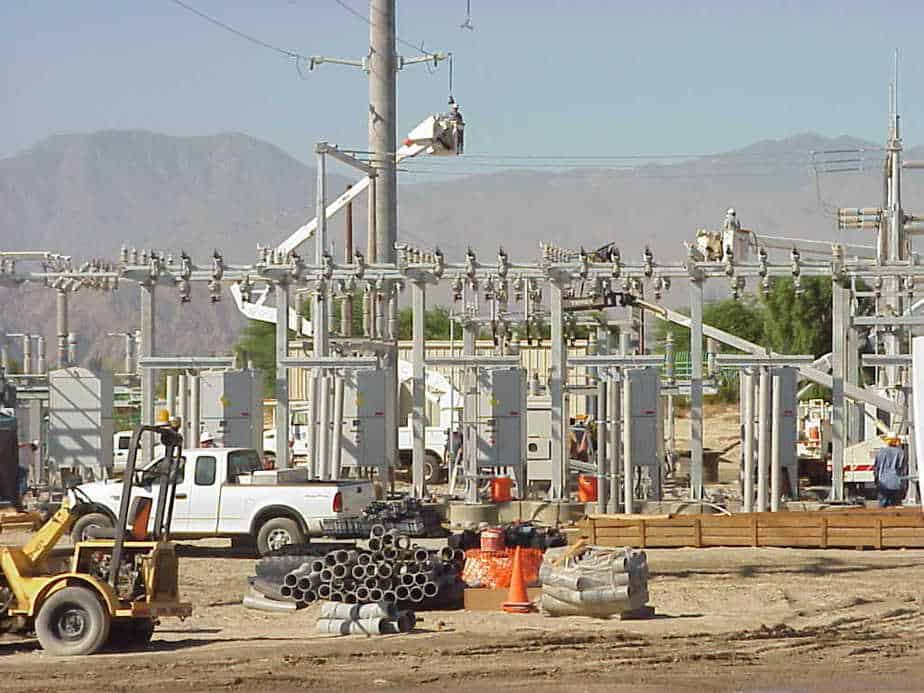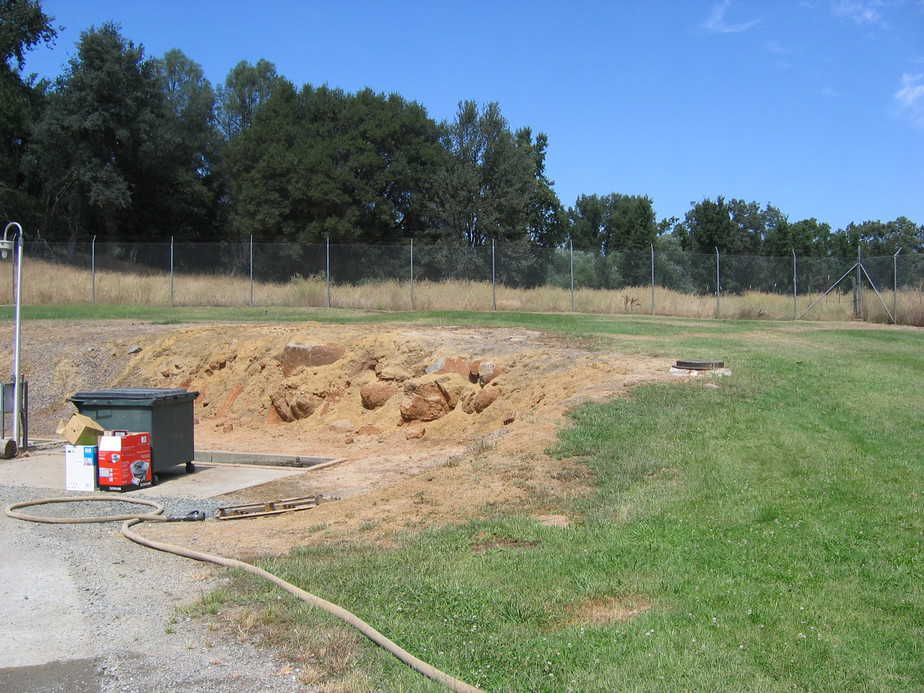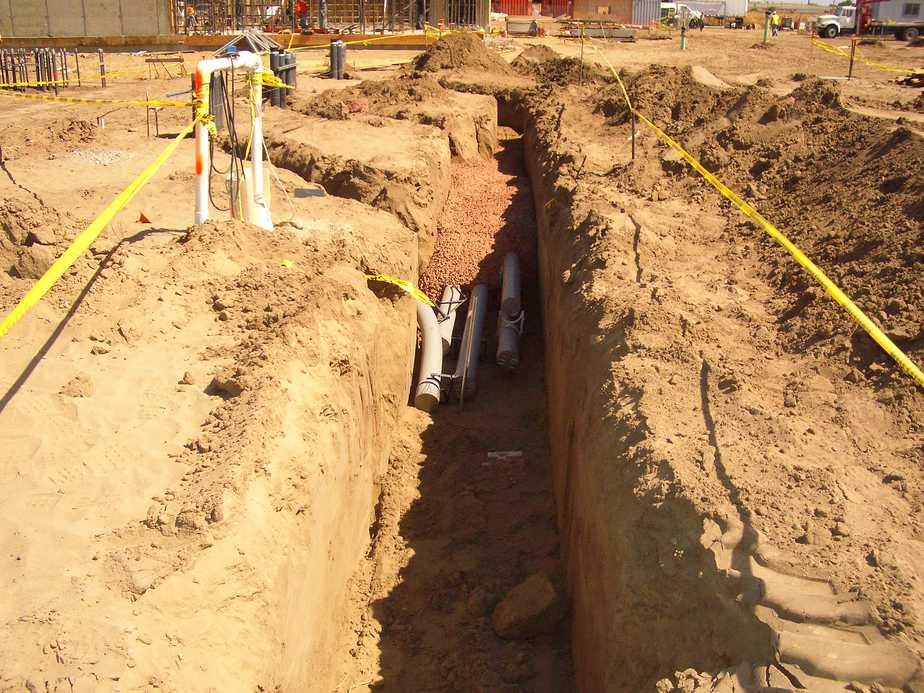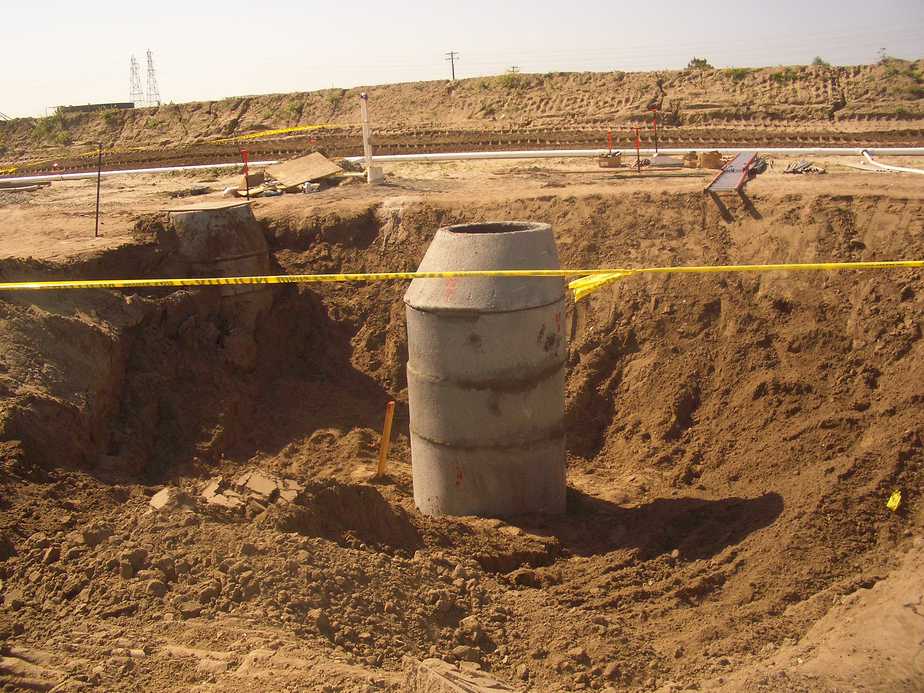Successful construction site preparation hinges on proper planning. If not, costs can skyrocket, and site conditions can become hazardous.
For context, let’s define construction site preparation as:
Getting a construction site ready and maintaining it for building and development.
In our discussion, the 12 tips we cover might seem overwhelming and unnecessary. But having managed many engineering projects, I find them indispensable. They benefit the construction team, engineers, and the public. That’s why they say in construction,
“Do it right or don’t do it at all.”

Important Note: Construction site preparation is unique to each project, but the general approach remains the same.
#1 Use final engineering design plans

It might sound obvious, but make sure you have a design in hand before you start digging. You want all project design elements finalized so you can visualize the end product and know how to prepare your site for construction, which leads us to the next 11 tips.

Important Note: Complete a geotechnical report and survey plan to obtain the following site information:
- Properties and conditions of soils
- Elevations and obstructions
This is a design and permitting requirement for almost every engineering project.
#2 Get to know your local construction rules
Before diving headfirst into your construction project, make sure you’re in the know about all the local and state restrictions that apply to your work area. This includes things like:
- Noise regulations
- Environmental standards for pollution control
- Allowable work hours
- Safety precautions
Don’t just blindly start a project! Ignoring these restrictions can lead to unexpected costs, delays, and even fines.

Important Note: Reach out to your local building department and also check local construction codes online to stay informed.
#3 Snap photos of your work site before you begin

Before you start making changes to your project site, grab your camera and document everything. Capture the pre-construction conditions, such as:
- Landscaping
- Trees and plants
- Fences
- Streets
- Sidewalks
- Roads
- Electric, gas, and water infrastructure
- Structures and foundations
These photos can save your ass if any disputes arise later on. Let’s say a client accuses you of damaging a sidewalk during construction. Just whip out your pre-construction sidewalk snaps, and voilà, problem solved!
Plus, having a visual record can help you troubleshoot any issues that come up. It’s like opening up an electronic device – everything seems straightforward at first, but once you start moving things around, it can get confusing. With photos, putting everything back together is a breeze.
#4 Plan for temporary facilities on site
Construction sites often need temporary facilities to keep the crew happy and everything running smoothly. So, plan ahead! Some facilities, like electrical setups, can take a while to get up and running—sometimes even 6 months or more.
#5 Protect your project site and its surroundings
When you’re prepping a project site, make sure not to damage anything nearby, like:
- Structures
- Landscaping
- Vegetation
- Natural habitats
- Roads
- Buildings
Also, try to keep the dust down. I usually ask contractors to submit dust control plans to minimize those pesky visible emissions. Water’s a cheap and effective solution, as long as you don’t create floods or safety hazards.
And speaking of safety, protect any open-cut excavation work near public streets. Clean your work area thoroughly after each shift, and make sure rocks, dirt, and mud don’t end up on public roads.
#6 Clear the way, but mind the critters
The perfect project work area is free of any unnecessary obstructions that could limit mobility or pose safety hazards—unless, of course, you’re told to leave certain things in place.
Easier said than done, though. I’ve been on construction projects that got put on hold because of things like eagle’s nests or butterfly habitats—both common (and surprising) environmental constraints in California.
For typical obstructions, consider removing:
- Brush
- Trees
- Logs
- Stumps
- Roots
- Heavy sod
- Vegetation
- Surface soil made of decaying materials
- Rocks
- Stones larger than 6 inches in any dimension
- Broken or old concrete and pavement
- Debris
- Piping
- Structures
- Artifacts
- Wildlife
Keep in mind, when stripping obstructions, you should only go about 4 to 6 inches deep—unless you’re digging for underground facilities. Also, be sure to dispose of any removed obstructions off-site. We’ll dive deeper into this topic in future tips.

Important Note: Don’t forget about the importance of easy access to your construction site. Make sure there’s enough space for builders and heavy equipment to move around. This includes planning for accessways near incoming roads, as larger trucks require a bigger turn radius.
#7 Smooth sailing: leveling and grading

Once you’ve cleared and grubbed your work area, it’s time to level it out and smooth things over. Fill in any noticeable holes, like ones left behind by a removed tree.
But also be mindful of any ridges or mounds you might create during grading. Keep slopes to a minimum, with mounds or depressions no more than 1 foot high.
And don’t forget, graded areas can expose hazardous materials. You might come across a piece of rebar sticking out of the ground while grading—watch out! A truck driving over that rebar could lead to a serious accident. So, always keep an eye out for safety hazards, even after grading.
#8 Tackling demolition and removal
In construction, you won’t always start with a blank canvas. Sometimes you’ll need to work around existing structures or infrastructure, so keep these things in mind:
#1 Pavement
Aim to make new pavement seamlessly blend with the existing one. For example, if you remove parts of asphalt pavement to install underground pipes, the surrounding untouched pavement should stay in top-notch condition.
When cutting pavement edges, make clean lines and right angles to create a neat finish. That way, when you connect the new pavement, it’ll look just as good, if not better, than before.
#2 Salvage
Often, your customer has rights to the materials you remove from the site. Give them a heads up several weeks before any demolition work, so they can decide if they want to salvage anything.
#Disposal
Figure out where to safely dispose of construction materials. For instance, if you’re retrofitting a substation, you can’t just toss old batteries in the trash. Disposing of hazardous waste in local garbage or storm drains is illegal.
#9 Public safety matters

Every construction site has potential safety hazards for people and animals alike. So, make sure your site stays secure by providing:
- Barricades
- Fencing
- Warning signs
- Lights
You might think that huge signs saying “DANGER. CONSTRUCTION AREA. KEEP OUT.” would be enough. But, trust me, they’re not. I’ve seen cases where people have still wandered into project sites and gotten hurt. In today’s litigious world, it’s crucial to go above and beyond with safety precautions.

Important Note: Every contractor should have:
- Insurance: coverage for damages, theft, or natural disasters
- Warranty: clear liability limits for all construction work
- Project manager: someone experienced to manage and oversee projects
- Safety plan: a protocol to tackle safety issues as they arise
#10 Keep it clean
Dispose of materials properly and safely. For instance, don’t overfill a hauling truck, risking materials flying off during transport.
Comply with all Federal, State, and local hauling disposal regulations. In California, the Department of Industrial Relations outlines vehicle haulage requirements.
Remember, cleanup should be an ongoing project activity. Don’t let waste pile up, only to scramble at the end of the project. Last-minute stress and disposal site limits can be a real headache.
#11 Owning up to demolition waste
Usually, material removed during clearing and grubbing becomes your property, unless specified otherwise. Plan ahead for off-site waste disposal and cover all disposal fees.
But before dumping, consider recycling or donating some waste materials. One person’s trash can be another’s treasure.
#12 The hidden world of underground facilities

Just like an iceberg, there’s a whole lot hidden underground that you won’t see until you start digging. Always call 8-1-1 before any excavation work to get those underground utilities marked. Trust me, the last thing you want is to accidentally hit an underground gas line.
You might run into common underground obstacles like:
- A shallow layer of rocks
- Loose-fill
- Tree roots
- Existing gas, water, and electric lines
- Drainage tiles
- Structural footings
Taking the time to locate these underground facilities will save you loads of money and time, not to mention it’s a crucial safety step to keep everyone out of harm’s way.

Important Note: Use Ground Penetrating Radar (GPR) to find buried utility lines, foundations, storage tanks, and other hidden surprises.
Construction site preparation wrap up
Preparing a construction site takes a ton of effort. That’s why it’s essential to have a solid plan of action before starting any project. By doing so, you’ll end up with a top-notch result every time.
Do you think any of these construction site preparation tips are overkill? What measures do you take when prepping your construction sites?

It was a good piece of advice when you told us to get to know our local construction rules first before we proceed with our project to ensure we follow them and avoid unexpected costs, delays, and fines if we don’t. I’m investing in a beach resort soon, so I need the property I’ll be using for it cleared before we can get started on the construction. I’ll keep this in mind while I look for land clearing services to hire for the project soon.
It’s always the best course of action as the local laws can vary drastically. You’ll save a lot of money by planning properly before a shovel is ever picked up.